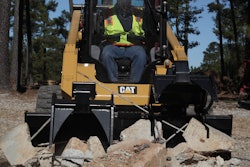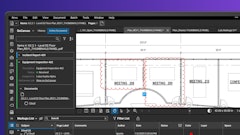
If I had to guess, many contractors were in the same boat in 2016 — they did not have adequate staffing to efficiently get jobs finished and billed. Sound familiar? If you thought it was bad before, wait until the season starts and all of your competitors looking for additional help begin to view your employees as low-hanging fruit. Come to think of it, you’re probably searching for additional folks, as well.
With the failure of many workers to return post-recession, baby boomers retiring and a potential loss of help resulting from federal efforts to control immigration, the construction industry finds itself just like many other US industries in need of talented, productive employees. Consequently, construction companies must take advantage of what other industries are doing to find, retain and improve their personnel situation.
The most pressing employee issue to address is how to keep the employees you have. If you have good people, or people who can develop into positions where you need them, you need to do whatever it takes to avoid turnover. To accomplish this goal, you should have a formal policy in place with steps to follow on an annual basis to ensure your staff stays put and feels they are in a good place with a competitive comp package. Do you have such a policy in place?
In case you’re wondering, a single employee turnover can cost the company between $7,000 to $25,000, depending on the level of staff or management that has left the company. This does not take into account any disruption on the jobsite caused by the departure.
Attract the Best and Brightest
Not only should you have a retention program for current staff, you should also have a program to attract candidates interviewing for positions you have available. Have a story to tell about your company, its history, the types of jobs you have worked on, success stories and problems that came up and how you handled them. This approach demonstrates that management cares about the company and how it operates, and has the skills to handle any and all obstacles that come up in the ordinary course of business.
What else can you do to pick off the cream of the crop? I advise you to:
- Have a defined “startup” program for new employees and make sure that the program is completed for each new hire.
- Provide skills training based on your pre-employment analysis of the candidate.
- Assign a senior employee to coach the new employee about company standards.
- Bring the new employees into the planning process to learn how you plan and execute on a job.
- Provide a detailed list of their comp program and benefits.
Such a program can pay for itself in no time because your “hit ratio” will improve. Some other simple things that are being done in other industries include:
- Having food and beverages on hand (as appropriate).
- Supplying a very good health insurance program with a minimum employee contribution.
- Providing industry standard allowances for work clothes, etc.
- Allowing a shorter work day for employees who work at a very efficient pace.
- Considering a four-day work week (when you can).
In short, be flexible and do what you can to keep your workers happy as long as doing so doesn’t add cost to your projects. There are people out there doing these things and they have a long list of applicants waiting for a job opening.
Another avenue to consider is recently retired workers who may be looking for some permanent part-time or seasonal work. Such arrangements are usually far more flexible compared to hiring a full-time person. Ask around; you never know who may be available.
Those of you with union contracts may have restraints on what you can do. But if you’re doing more than required by the contract to enhance your ability to keep employees, I can’t imagine the union objecting.
Get By With Less
On the other hand, a company can become more efficient using the latest technology available — to the extent that fewer workers are required to do the same amount of work. This is happening in just about every industry in the U.S.
Make sure you keep up with what is happening in your industry by joining and attending association meetings, going to CONEXPO-CON/AGG and other equipment shows and talking to your peers to find out what they are doing. Performance Groups, where 15 to 20 company CEOs gather to talk shop and compare numbers, are probably the best way for you to find methods to more effectively run your business.
There should be an increase in work in 2017. If so, you should do some planning to see how many staff additions or changes would be required to get the jobs you are interested in. That way, if a talented person shows up on your doorstep, you will be prepared to discuss a future with your company.



















